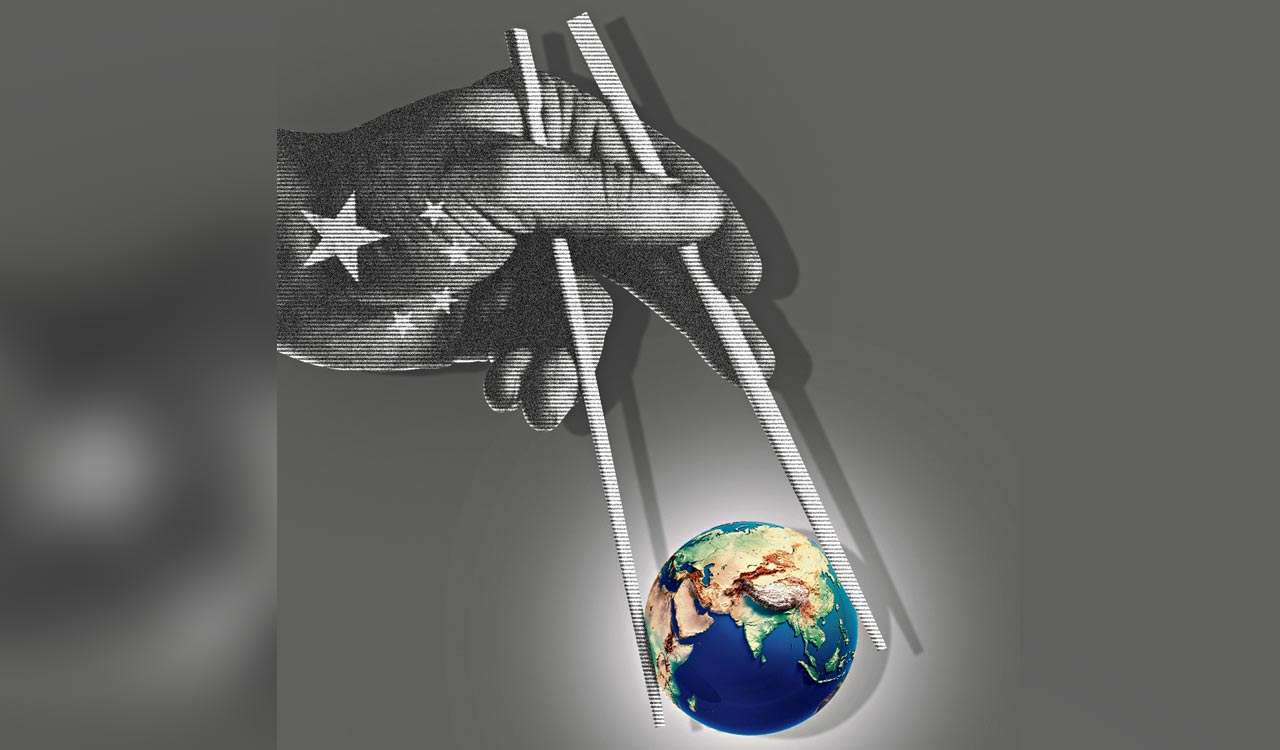
Post-Cold War, China emerged as both a continental and maritime powerhouse, while engaging in a silent war both on sea and land with its neighbours
Published Date - 11:59 PM, Thu - 14 September 23
By Dr Karamala Areesh Kumar, Prajwal TV
The Chinese influence in the Indo-Pacific and along the South China Sea and East China Sea has been steadily growing. What started as simple military actions, provocative in their manner, to protect itself and its waters from the effects of the Cold War, has now turned into a fight for hegemony against the West and its allies in the same waters.
During this progress, China has shifted its tactics from transgressing and slicing its way slowly to gain more territories without the world’s notice, known as the Salami Slicing Policy. We analyse this process of shifting tactics while correlating Salami Slicing as a policy that proposed death by a thousand cuts along with the new challenges that China faces as a result of shifting its policy.
Death by a Thousand Cuts
Robert Haddick, a visiting Senior Fellow at the Mitchell Institute for Aerospace Studies, defined the term as “the slow accumulation of small actions, none of which is a casus belli, but which add up over time to a major strategic change,” to describe China’s actions in the South China Sea back in 2012. It could be understood in international relations that a country may use the salami slicing tactic to indulge in actions so minor that the other country may not deem it necessary to respond.
Though it may seem like a minor cut on the surface, the cumulative action of continuous cuts would lead to major bleeding that makes it possible for the salami slicing actor to gain an upper hand in a strategic sense to gain control over territory and trade.
As Foreign Policy
Post-Cold War, China emerged as both a continental and maritime powerhouse in the world, whilst engaging in a silent war both on sea and land with its neighbours India, Australia, Japan, and its Southeast Asian neighbours across the South China Sea to expand its territory and exert greater influence to establish itself as a global superpower. Then Indian Army Chief General Bipin Rawat had warned about China’s salami slicing strategy saying, “taking over territory in a very gradual manner, testing our limits of threshold is something we have to be wary about and remain prepared for situations emerging which could gradually emerge into conflict.”
Actions such as minor clashes between soldiers, ramming naval ships into the naval ships of other countries and harassing patrol ships by firing water cannons in the name of protecting its sovereignty against “aggressors” in the South China Sea and the Indo-Pacific have continued. Though these actions at first did not seem noteworthy for countries to respond, these did build up a common fear among Southeast Asian nations regarding the rising power of China.
As the political scientist Erik Voeten noted, “the key to salami tactics’ effectiveness is that the individual transgressions are small enough not to evoke a response.”
However, it is important to note that many leading analysts in China view the country as a victim of sovereignty disputes. Such an image being portrayed to its citizens has made it possible for China to justify its actions every time western countries, such as the US or Vietnam during the oil rig crisis, try to expose Chinese transgressions through video tapes, and shame it on the global stage. This, however, seems futile since China has been using the videos of its vessels trying to protect its claims to the territorial waters, proving extremely popular among the supporters of the current Chinese regime while declaring the videos of western nations as “biased” and “propaganda of the west”.
China’s understanding of the South China Sea itself is that it naturally belongs to China as part of its ‘Southern Sea’, locally named ‘Nanhai’. Until pre-World War 2, South China Seas were only meant to serve two purposes trade and navigation. China started to take note of the importance of these seas post-Cold War when it began to reassert its dominance and regain control over the islands and waters, defending its sea coast and surrounding areas such as the Taiwan Strait.
While it continued to occupy certain reefs that have now become disputed/contested territories, it did so by slowly, but steadily, encroaching smaller territories, which at first did not pose a threat to host countries. However, its steady accumulations of islands and building artificial island for naval bases raised concerns over the influence of China in South East Asia and the Indo-Pacific.
Changing Tactics
From the historical perspective, China”s assertiveness in the South China Sea is simply taking back an area that it perceived originally belonged to it, treating the area as its natural grounds of interest and influence.
Previously what began as a slow but apparent transgression into the Exclusive Economic Zones of the Indo-Pacific nations, ever since 2014 China has switched to a more aggressive approach in asserting its dominance both on land and water. It has continued to escalate border conflict with violent clashes with Indian soldiers that have led to dozens of deaths. It has sent its air fleet into Taiwan”s Air Defence Identification Zone in a provocative manner in the name of conducting drills. It has blatantly sent its Coast Guards into the Japanese territorial waters and around the disputed Senkaku Islands while sending a fleet of 200 boats into the South China Sea to establish its control.
Such actions have exposed China’s, urgency and the aggressive tactics have led to several countries such as India, Japan, the United States and Australia revamping their military cooperation through QUAD in the Indo-Pacific to keep in check the growing influence of China. Vietnam and the Philippines have expressed discontent with their fellow Southeast Asian Nations for the lack of unified actions as many had fallen victim to the divide-and-conquer strategy of salami slicing and their reluctance in responding to Chinese aggression.
QUAD has reemerged and many previously anti-US nations have signed accords with the US as a means of showing resoluteness among its now hostile adversaries. Such actions have left China with limited possible actions to defend and justify its bolder and go for more aggressive actions, different from the salami slice tactic.
As China’s neighbours are now more aware of its actions than ever before, the security dynamics in the South China Sea and the Indo-Pacific have become more tense coupled with the rising US intervention. China’s blatant actions against its adversaries can now be concluded as China discarding its Salami Slicing tactic to move forward openly and blatantly with aggressive actions as it stands against the US hegemony to establish itself as a global superpower.





Leave a Reply